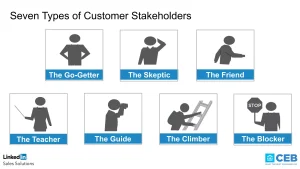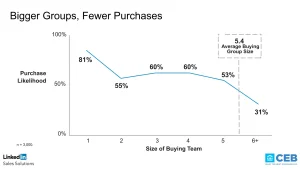In the beginning was the word. And that word was “positioning”. I jest ye not. It comes before the website. Before the first call sales pitch. Before the messaging. Before the branding.
Positioning is the beginning. And it’s a thing all on its own: but who’s responsible, accountable, consulted, and informed?
In this piece we bitch about everything that’s wrong with positioning. Then we’ll say what good looks like.
And remember, this is a guide, not a rule. So your mileage may vary, fellow travellers!
Where's our positioning? Have you seen it? Who had it last?
“Isn’t positioning the same as messaging? And doesn’t marketing own messaging? So it’s marketing’s fault!”
Ah, that Swiss Army Knife aka Marketing. Well, positioning is not owned by them, though they rely on it most directly, so mostly blame by association.
For example, if marketing are creating the corporate deck (are they?), and doing more than branding, then they’ll be in charge of words, aka messaging.
But where do the words for messaging come from? “A messaging workshop!”
And aren’t those messaging workshops awful? And is there more than just the marketing bods in that messaging workshop? “Yes, of course, they can’t do it on their… own… erm…” We are getting somewhere.
Messaging isn’t positioning. Messaging builds on positioning. Positioning comes first. They’re both activities in a go-to-market plan, but they’re not the same thing.
So what is positioning?
What is this thing positioning ye speaks of?
Positioning is an internal activity that answers five questions:
- ALTERNATIVES – What alternatives to you would your prospects choose?
- ATTRIBUTES – that set you apart from the alternatives.
- VALUE – which attributes to customers care about enough to pay you and change their work?
- ICP – describe in painful detail what an ideal customer profile is. Don’t do old skool personas.
- MARKET – how many customers fit that ideal profile, and where are they?
Positioning is answering these questions as a team, and testing the answers before you even do messaging.
It’s internal because the outcome of it is not for public consumption (but you should test stuff with friendly public people). Messaging follows on from positioning to create the public “stuff”.
This might be part of a go-to-market plan, but marketing doesn’t know the answers to all of these positioning questions: so where does the intel come from?
Where do we get positioning insights from?
Positioning intelligence is distributed inside and outside the company. Just like it takes a village to raise a child, it takes a team to answer the five positioning questions intelligently.
Inside, these people need to be debriefed with a bright light and truth serum. Only kidding, you don’t need the bright light:
- CEO who has lots of prospect/customer chats;
- Sales who’ve been told no so many times they forgot what yes sounds like;
- Product/service developers with deep understanding of the industry;
- Investors, NEDs, Board who have other, secret, conversations.
Outside the company, there’s more positioning intelligence to harvest:
- Prospects, whether they say yes or no, skeptics or fanatics.
- Customers who are already paying: what’s their perspective?
- Analysts who specialize in the domain.
- Your peers in the industry who don’t have a dog in the fight.
10 steps for positioning in a tech B2B
The short answer is: get the band together, and learn to jam! Don’t give one person (marketing) an instrument and send them into a cupboard on their own to work it out.
For example, the CEO needs to be a contributor, a listener, a believer, a sponsor, a tester, and an agitator. Everyone needs to do these things.
The 10 short steps are:
- Get a positioning plan (see below).
- Get a team together (4-5 is a nice size).
- Do a bit of homework prep.
- Do a workshop.
- Create your positioning doc on ONE PAGE.
- Go and test it with everyone, especially outside, on new people, on skeptics.
- Revise positioning until happy.
- Use positioning to build messaging and other stuff.
- DO NOT MODIFY POSITIONING during messaging etc.
- Revisit positioning in six months.
We wrote a short guide on how to do internal positioning.
We also have an off-the-shelf consulting package to help you do positioning.




